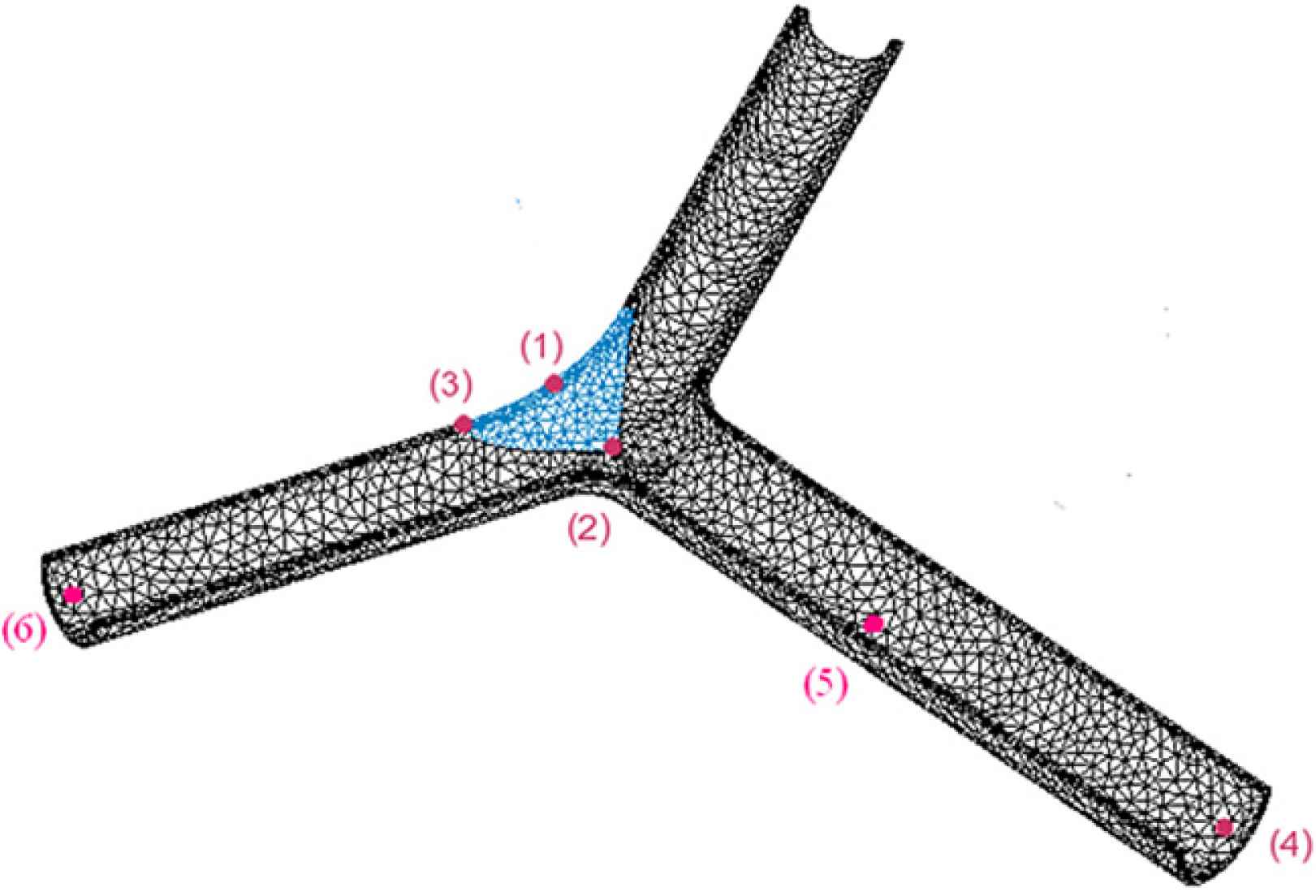P10.07 VERIFYING THE NEWTONIAN ASSUMPTION FOR BLOOD FLOW IN ANEURISMAL GROWTH MODELLING
- DOI
- 10.1016/j.artres.2011.10.151How to use a DOI?
- Open Access
- This is an open access article distributed under the CC BY-NC license.
A few number of studies have examined the effect of hemodynamic factors on the initiation and growth procedure of cerebral aneurysms. The Newtonian behaviour is assumed for blood flow in almost all of the mentioned investigations. Since the majority of intracranial aneurysms occur at bifurcations, to verify this assumption, we constructed a 3D model of the basilar artery bifurcation that includes the luminal hemodynamics and the arterial wall response within a computational fluid-structure interaction (FSI) framework. The arterial wall was assumed to be elastic and isotropic. The flow was considered steady, laminar, and incompressible. The blood flow was assumed to behave both Newtonian and no-Newtonian following Carreau model (Cho, YI, Kensey, KR, Biorheology, 28:241–262, 1991). The fully coupled fluid and structure models were solved with the finite elements package ADINA 8.5. The blood pressure and velocity and the wall shear stress (WSS), effective stress and deformation distributions were compared in two cases. The results show similar patterns except the WSS magnitudes which were under-estimated with the Newtonian assumption. This difference was evident in the low velocity regions like the apex of the bifurcation (about 20%) which is a probable position for the aneurysm formation. WSS is one of the critical hemodynamic factors affecting aneurismal initiation and development. Therefore, we believe that it is worth to consider the non-Newtonian behaviour of blood flow in order to investigate the detailed relationship between hemodynamic factors and vascular diseases, and it may affect the growth procedure of cerebral aneurysms.

Position of characteristic points
| Point Number | Newtonian | Non-Newtonian | % Difference | |||
|---|---|---|---|---|---|---|
| WSS [Pa] | Pressure [Pa] | WSS [Pa] | Pressure [Pa] | WSS | Pressure | |
| 1 | 0.688 | 15831.600 | 0.852 | 15832.500 | 19.284 | 0.006 |
| 2 | 2.980 | 15783.900 | 3.236 | 15784.600 | 7.911 | 0.004 |
| 3 | 5.670 | 15616.300 | 5.989 | 15616.600 | 5.325 | 0.002 |
| 5 | 4.403 | 15851.600 | 4.717 | 15852.500 | 6.639 | 0.006 |
Comparison of the WSS and pressure magnitudes of the characteristic points between Newtonian and non-Newtonian simulations
Cite this article
TY - JOUR AU - M. Nabaei AU - N. Fatouraee PY - 2011 DA - 2011/11/29 TI - P10.07 VERIFYING THE NEWTONIAN ASSUMPTION FOR BLOOD FLOW IN ANEURISMAL GROWTH MODELLING JO - Artery Research SP - 190 EP - 191 VL - 5 IS - 4 SN - 1876-4401 UR - https://doi.org/10.1016/j.artres.2011.10.151 DO - 10.1016/j.artres.2011.10.151 ID - Nabaei2011 ER -
